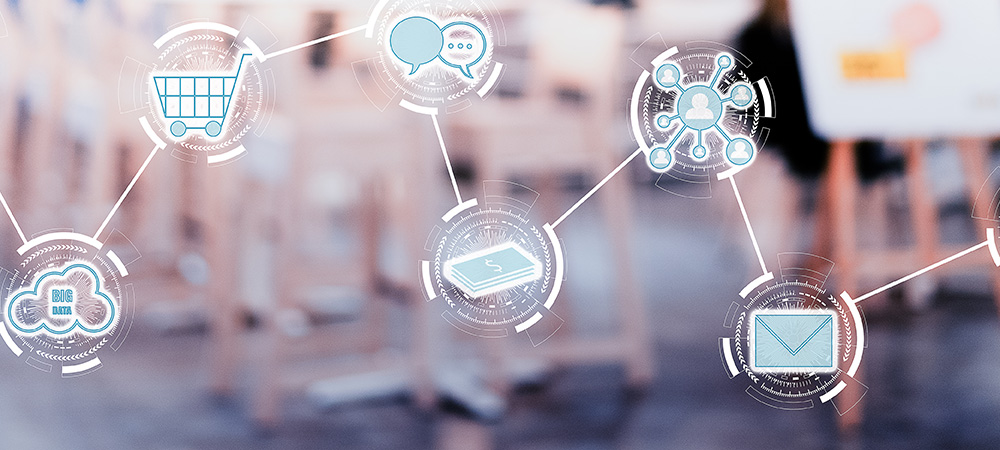Obtaining meaningful insights through data can be a difficult area to navigate but this invaluable information can support a business’ marketing approach and provide a better understanding of its customers’ behavior. Nick King, President and Chief Product Marketing Officer with Snowplow, tells us how organizations can best use prediction software to help make informed decisions and realize their future goals.

What challenges are businesses experiencing when it comes to understanding their users’ behavior through data creation?
Behavioral data describes how customers have interacted with a business, which can in turn inform businesses as to how they should work with customers. Accurate data is used to drive more customizations in Artificial Intelligence (AI) and Machine Learning (ML).
Businesses are unable to utilize the power of behavioral data as they rely on the manual process of extracting data from their existing SaaS applications. These applications include analytics platforms and customer data platforms (CDP) feeding data to their warehouse or lake.
Extracted data was never designed to be utilized outside the platforms they were generated in leading to significant and labor-intensive data-preparation in advance of deployment.
From our own research report we know data practitioners spend 26-50% of their time finding, cleansing, and preparing data for analysis rather than generating insight and value for their business.
Snowplow helps to remove that complexity of data preparation, by enabling businesses to purposefully create data for the data applications. Snowplow makes it simple to manage things like compliance, privacy and ensuring accurate and informative data, changing how businesses manage behavioral data across their customer base.
Why is it so important to understand users’ behavior today?
As a buyer, you might start online, using multiple touch points to go back and forth to a website. Then you might download a business’ Augmented Reality app, try on some of the clothes or glasses before going into the store to purchase.
That is typical behavioral data, but it is difficult to track from a digital perspective. If you can’t fill in the non-digital gap you may make assumptions that the VR app isn’t working, for example, but that could be the main factor that commits people to a purchase.
Another element is that data has grown so much due to how customers are interacting with businesses and how businesses work with their partners. Being able to link events in the user’s behavior is important and when you have more sophistication in collecting and reading that data, your business intelligence is far more accurate, allowing you to build interesting use cases around AI and ML.
Customers also now demand and expect to have a great user experience, so businesses need to meet these expectations through using data collection for their AIs to result in a unique and effective user experience. That’s why it’s important to understand users’ behavior and the reasons we set into motion building a solution that provides everyone with access to this type of technology.
Why is personalization important when it comes to insights?
Traditionally, businesses would target either a segment or a generalized population, but over the past 10 years we have micro-segmented potential buyers, in recognition that we are all unique individuals, creating numerous journeys.
Therefore, personalization has become more complicated but, with more specific and granular data and systems, the results can be invaluable. However, there is an unfulfillled opportunity to automate that further.
Secondly, businesses spend significant amounts of money on acquiring customers and then maintaining them, with ever increasing ad spends without knowing what works effectively. If you can use your data correctly, you can become more precise with your spending and with the right dollar in the right place, you gain far more efficiency.
Overall, if you can get more efficiency with less investment, and if customers get the experience they’re looking for, that’s a good thing. That’s why personalization, when you get into these more advanced data use cases, can be so powerful.
How can prediction models help businesses make informed decisions to achieve their future goals?
Predictive models can often get complicated, with data becoming hard to understand or maintain. For us, the first step is making data very easy to understand. Once it is made descriptive, as opposed to cryptic column names, you can then start to build machines that learn algorithms to predict things like churn or propensity to buy.
You can start to integrate your acquisition platforms ahead of that information coming along with records of past leads. It helps you be more efficient in knowing who you should engage with first and what messages engage people, but also gives you flexibility to start custom building your own systems.
We’re now seeing the desire not only for simple predictions like churn, but also other events that you can engage customers with, and look at behaviors to predict and inform other decisions.
We built Snowplow with the mission of not only supporting third-party AI/ML platforms, but also providing increasingly sophisticated teams with the ability to use their own Machine Learning technologies.
Prediction is estimating the probability of an event happening based on all the features and behavioral data points you have created throughout a customer’s journey. You begin to delight customers by predicting their intention, as well as their outcome. If businesses can be exactly where the customers are while they’re asking a question, it makes the brand more relevant and the perception of their service increases.
How can organizations begin to utilize their data creation more effectively?
Many businesses invest in a tool that isn’t quite right for them and work backwards, attempting to shoehorn their needs into it. Snowplow has designed a data creation platform to customize the entire approach and build a data structure that’s right for you and explains what your customers are doing.
Each business’ customer journey is unique and you want to be able to bring it together in a way that’s descriptive of that journey. The first action should be to map that out and understand your model, customers and the needs for your platform.
The next consideration is where you are collecting that data from and what policies you want to enforce. You might be obtaining data from an IoT device, for example, so you’d need to think about your creation point and then apply policy by considering data sovereignty and GDPR.
Regulations such as these can land businesses in real trouble if they get it wrong but, if they get them right, it’s a competitive advantage because companies are often too nervous to approach it.
Businesses should also remove things that may introduce bias – consider removing gender completely from your data, because there’s no gender for any of the models to use, room for gender bias can be significantly reduced.
Finally, think about the desired outcomes. For example, optimizing your ad spend is one example which can save money and which you can drive via conversion. Once you’ve got that data, what is the activation you want to start with? Once you’ve got the philosophy, you can continue to add more activations on top, ensuring consistently credible data.
What are some of the shortcomings of CDPs and what should an efficient and effective CDP offer?
Handling customer data is always a very sensitive activity. Businesses should look for CDPs or a platform that isn’t just relating data from point A to point B but is creating data in a way that’s well understood, compliant and moves it into a data structure that represents the business.
Moving data around in a structure that doesn’t quite fit a business creates more work, more room for errors and more complexity.
Third-party data creation and data collection is becoming more regulated and more companies such as Apple are specifically removing the ability for third parties to capture this data. At Snowplow, we deliver all data first-party which means that with Snowplow you are the custodian of your data, it actually sits within your infrastructure, removing your dependency on 3rd parties to provide these insights.
As custodian of our customers’ data, you need to make sure that we do the right thing for your customers, ensuring that data is protected all while ensuring the data is customized for your businesses use cases. That’s a powerful feature for a CDP.
Click below to share this article

